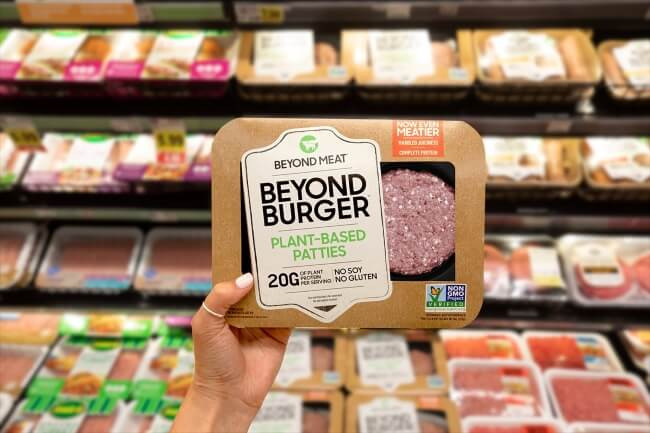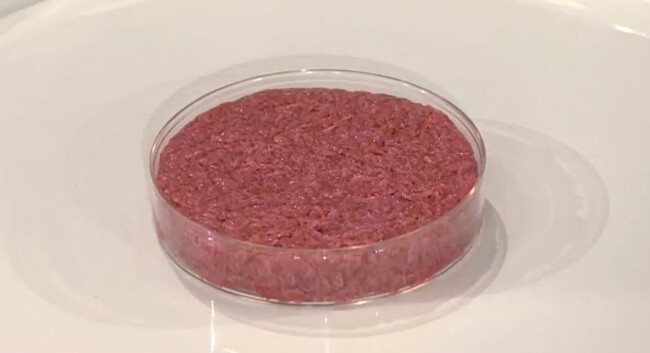All About Plant-based and Lab-Grown Meats
24-03-2020 | By Moe Long
There’s been a societal trend towards less meat on the plate. Instead, plant-based meats provide viable alternatives to more traditional animal-based protein sources. Motivations behind this diet shift range from animal rights activism to environmental friendliness, and even just the popularity of plant meats. What’s more, lab-grown meats have popped up and maybe the future of food. Learn all about plant-based and lab-grown meats, from why they’ve blossomed in popularity to what might populate plates going forward.
The Impact of Meat - A Pound of (Cow) Flesh vs. Plant-protein
Plant-based diets, while potentially better for individuals, aren’t necessarily healthier. Sure, a salad is plant-based but technically so are french fries. Likewise, while fruits and vegetables are definitely healthy, protein remains a necessary staple of a balanced diet. The meat industry, at least with animal husbandry, has a major impact on the environment. As UCLA studies found, a pound of beef mandates anywhere from 2,000 to 8,000 gallons of water to produce. Primarily, that water is utilized for irrigating livestock sustenance, whether grain or grass. A gallon of cow’s milk requires just shy of 2,000 gallons of water to produce. By contrast, a pound of tofu takes 302 gallons of water, and a pound unprocessed oats need a bit less than 300 gallons of water. That’s a significant impact reduction on water alone for plant versus animal protein. UCLA’s data indicates that cutting down on meat consumption along can lead to a 50% reduction of freshwater sources.

Furthermore, a UN climate change report suggested that eating less meat is a worthwhile effort in curtailing climate change. This research from the Intergovernmental Panel on Climate Change (IPCC) offers that a plant-based diet lends a major impact, resulting in up to four times less greenhouse gas emissions as a meat-consuming diet. Moreover, agriculture production can even sequester carbon, a huge plus for plane agriculture. Still, the United States Environmental Protection Agency (EPA) found that animal husbandry only accounts for about 4% of all greenhouse gas emissions, with other industries such as fossil fuel consumption clocking at a whopping 80%. Nevertheless, that 4% is across the US, compared to the almost 15% of greenhouse gas emissions globally from livestock. And regardless, diet is something easily controlled. Tapping into this trend, many major fast food restaurants including Burger King debuted menu items like the Impossible Whopper, swapping a traditional cow-based patty for a plant-based burger.
How Plant Meats are Made
But how, exactly, are plant-based meats such as Beyond Burgers and Impossible Burgers processed? Often, plant protein meat alternatives are created with high-moisture extrusion which creates a meat-like or seafood-esque texture. In the process of extrusion, proteins are afforded a meat-like texture, and ultimately packaged in wet environments like cans or bags. Think along the lines of tender, juicy Beyond Sausage or Beyond Burger bits. There’s also shear cell technology which relies on high temperatures combined with shear-induced structure creation that, again, provides a realistic animal meat texture to plant proteins. In this case, it’s more fibrous and tough, as opposed to tender and juicy, sort of like No Evil Foods, an Asheville, North Carolina-based plant meat company, whose chicken and pulled pork is to die for.
Technically, plant protein doesn’t need to come in a meat form factor such as a burger patty, sausage link, or fish stick shape. In fact, veggie burgers are in no way new. But the difference is that the veggie patty of yore didn’t look, smell, and taste like a burger. Whether it’s the nostalgia factor for vegetarians and vegans, a less daunting veggie burger for newcomers, or something else entirely, plant-based meats are definitely becoming mainstream, with fast food joints like Burger King, Qdoba, and Hardee’s doubling down on the popularity.
It’s Alive - Lab-grown Meat
Striving to solve the animal husbandry problem, lab-grown meat provides a viable alternative to livestock. Sink your teeth into a juicy ribeye, no animals harmed. That’s the idea behind lab-grown meat, or cultured meat. Whereas plant-based meats find plant protein processed to appear similar in texture and taste to their animal counterparts, cultured meats go a different route. Companies such as Finless Foods, a lab-grown seafood start up, and Memphis Meats, produce what’s known as clean meat. Theoretically, this could serve up healthy animal meat proteins while seeking to aid in animal ethics as well as environmental impact.

Cultured meats first require muscle samples from animals, with stem cells collected. Then, those cells are replicated and multiplied. One lab-grown meat company Mosa Meats, reports that a tissue sample from one cow can result in up to 80,000 quarter pounders. Not only is this clean meat a neat concept, but there’s been much support with the likes of Bill Gates supporting the trend with monetary donations. Unlike plant-protein treated to appear similar to animal protein, cultured meat retains the properties of its animal source, resulting in meat that’s chewy, juicy, or gamey. The main challenge facing lab-grown meat is cost. In 2013, s single lab-cultured burger cost over $300,000. That’s a pretty pricey meal. Still, as technology becomes more efficient, perhaps lowering costs will make clean meat a more sustainable, scalable endeavour.
Plant-based and Lab-grown Meats: The Last Bite
There’s a clear trend of reducing animal husbandry-based protein reliance. Ethics aside, the environmental impact is undeniable. While it’s totally feasible to source plant proteins such as tofu and chickpeas, plant meats emulate the texture, taste, and even smell of animal meat products. At this point, it’s easy to find such goodies including plant protein burgers, sausages, and even fish patties lining the aisles of your favourite grocery store as well as populating menus at fast food restaurants. A true sign of going mainstream is being on the menu at Burger King, so truly plant-based meat alternatives are no longer niche. But for those that just can’t be fooled by a Beyond Burger, lab-cultured meat could one day be a staple in stores and restaurants alike. Some have even heralded insects as an animal meat competitor.
What are your thoughts on plant-based and lab-grown meats? Which plant meats do you like or dislike?

